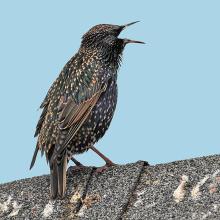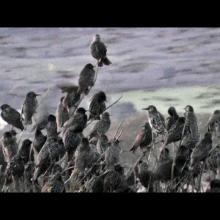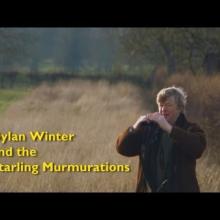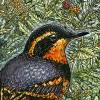

Join BirdNote tomorrow, November 30th!
Illustrator David Sibley and actor H. Jon Benjamin will face off in the bird illustration battle of the century during BirdNote's Year-end Celebration and Auction!
For years, we thought that when a bird perched on a branch to sleep, a specific tendon in its heel kept its feet locked on tightly. Another hypothesis claimed that it’s the internal structure of the birds’ toes that keeps them securely perched. But recent research suggests that the answer could be simpler. European Starlings without toe tendons could still perch and sleep through the night. Their innate balance and the way their toes wrapped around the perch were enough to keep them upright.
Today’s show brought to you by the Bobolink Foundation.
BirdNote®
How Birds Stay Perched
Written by Bob Sundstrom
This is BirdNote.
For years, we thought that when a bird perched on a branch to sleep, a specific tendon in its heel kept its feet locked on tightly. It was believed that the bird’s weight over its heels activated the tendon, clamping the toes in an unfailing grip.
[Flock of European Starlings]
Another hypothesis claimed that it’s the internal structure of the birds’ toes that keeps them securely perched.
The tendons in some birds’ toes have rows of tiny ridges on them. The toes have matching grooves on their inner surface that closely match the ridges. It was thought that the ridges and grooves could interlock, a bit like how a plastic zip-tie works.
But a recent experiment with European Starlings suggests that birds might not need fancy interlocking tendons to stay on the branch. Scientists removed tendons from the starlings’ toes so they couldn’t flex them, but the birds could still perch and sleep through the night. Their innate balance and the way their toes wrapped around the perch were enough to keep them upright.
It’s a new explanation to the old question of why a perched bird doesn’t flip upside down and fall off its twig. Sometimes the simplest answer is best.
[Flock of European Starlings]
For BirdNote, I’m Michael Stein.
Today’s show brought to you by the Bobolink Foundation.
###
Senior Producer: John Kessler
Production Manager: Allison Wilson
Producer: Mark Bramhill
Associate Producer: Ellen Blackstone
Digital Producer: Conor Gearin
Sounds of European Starling flock provided by Martyn Stewart at Naturesound.org.
BirdNote’s theme was composed and played by Nancy Rumbel and John Kessler.
© August 2021 BirdNote Narrator: Michael Stein
perching-02-2021-08-18 perching-02
Reference: https://onlinelibrary.wiley.com/doi/abs/10.1002/jez.1714
David Allen Sibley. What It’s Like to Be a Bird, p. 121. New York: Knopf, 2020.








